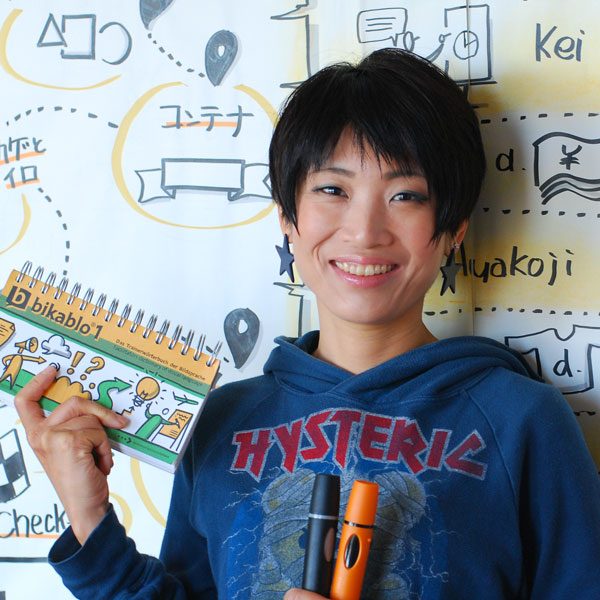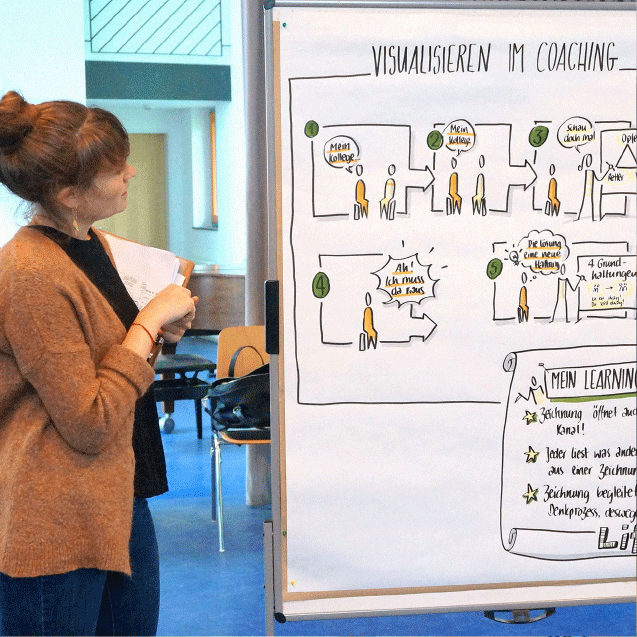Visual Feedback: a Second Channel of Communication
- 21/06/2022
During discussions with colleagues or clients, you may sometimes get the feeling that there is a lack of mutual understanding, to create clarity all you really need is: a pen, a piece of paper, and a couple of drawing basics. With these tools, visualization opens a second channel of communication, and immediately, people begin to better understand each other’s point of view.
An excerpt from our bestseller “UZMO – Thinking with the Pen” by Martin Haussmann
SHARE ARTICLE
How thoughts are “anchored” in the brain.
Back in 1971, Allan Paivio, a native Canadian, introduced his Dual Coding Theory at the University of Western Ontario. His theory was based upon the assumption that, since we mentally process images differently than we do verbal or written information, we learn more easily when we can also imagine information in terms of images. If we’re learning a foreign language, for instance, and trying to memorize a word like “Hund,” the German word for “dog,” if we imagine a scruffy dog at the same time, our brain then will create two different “representations,” as Paivio has termed them, for a single piece of information. When we later try to recall this learned piece of information back into memory, we can activate both of the information channels, and this allows us to recall the information more quickly.
We employ this theory at the bikablo akademie as well, when, in our discussions with others, we translate ideas, aspects, and details into small sketchnotes, consisting of text and images. We refer to these as “thought sketches” or “sketchnoting in dialogue.” When we do this, the following happens:
Sketchnotes in dialogue - just give it a try !
For your next meeting with a colleague, put out paper and pens and try to capture ideas together using small pictures or visual notes. To sketchnote effectively in a conversation, you really only need a few simple visual concepts. And don’t worry – they’re just sketch notes! Nothing can go wrong.
MORE ARTICLES ON THIS TOPIC
You Might Also Be Interested In...

How to use your iPad instead of the webcam in MS Teams
Why do I want to connect the iPad to MS Teams (or Zoom)?
I would like to be able to show my iPad Screen as a tile in the normal Teams window. It should be subtle and not by sharing my screen to draw to much attention and to have a seamless switch between different views. I can i.e.
• document the meeting using OneNote or ProCreate
• easily zoom into pictures or drawing
• easily annotate pictures or digital whiteboards
• using the drawing feature while presenting your content

Design Thinking and Visual Thinking – a perfect fit?
In a recent interview Hiromi Hara speaks about her experience with applying the design thinking method with the help of visualization.
Hara explains that design thinking is not primarily about problem solving, rather about unveiling complex problems and getting better insight in the root cause of issues, hence the importance of the expression of individual perception and the comprehensible yet memorable depiction of thinking processes.

Using Visuals in Coaching
How our global trainer Jill Greenbaum got into drawing and which impact visualization has got on coaching situations.
